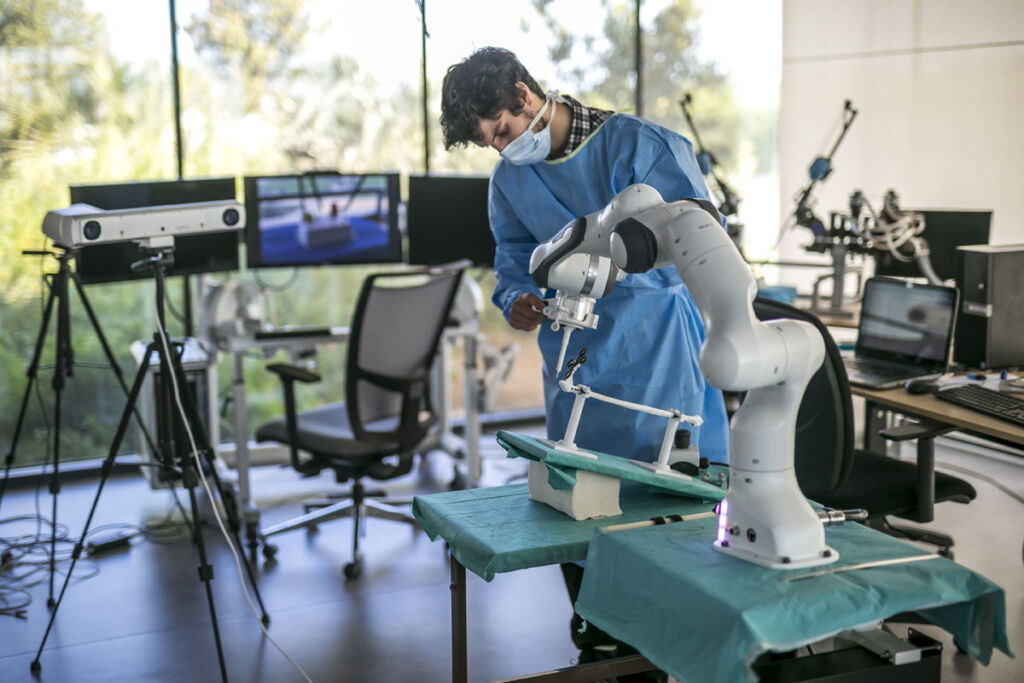A new five-year research contract at the UM
Creation, renewal, closure or merger - the life cycle of research structures in France begins again every five years. To launch the new five-year contract for research at the UM, Philippe Augé, the University's President, and Jacques Mercier, Vice-President in charge of research, set out the major orientations for research and its organization.

Seventy-two. This is the number of structures attached to the University of Montpellier under the research part of the contract, which began in January 2021. What is the purpose of this contract? " It sets the pace for French research and determines the duration of the existence of the research structures," explains Jacques Mercier. In fact, every five years, these structures are evaluated by the Haut conseil d'évaluation de la recherche et de l'enseignement Supérieur (HCERES). "On the basis of this evaluation, the supporting institution decides whether to discontinue or renew the structure. It can merge some of them or create new ones, " continues Jacques Mercier.
This contract, which began in January 2021, will exceptionally extend over 6 years, from 2021 to 2026. This extension is the umpteenth consequence of the health crisis that has shifted the evaluation of certain structures to other sites in France. Six years to pursue the ambitions of the UM and its partners: " We will continue to develop major strategic axes such as the development of interdisciplinarity, the reinforcement of partnerships with the socio-economic world, a better insertion in the European research area, but also an increased commitment to responsible research conduct " declares Philippe Augé.
72 research structures
Although the drafting of this contract is essential, its content should not upset the UM research panorama. The number of structures has fallen from 78 to 72, due to mergers between laboratories, notably the Plants health institute of Montpellier (PHIM), the result of a merger between the Biologie et génétique des interactions plante-parasite (BGPI), Interactions plantes microorganismes Environnement (IPME) and Bioagresseurs laboratories. Also noteworthy is the birth of a new Inserm-UM entity: the Institut Debrest d'Epidémiologie et de Santé (Idesp). Its aim is to gain a better understanding of chronic diseases, which affect over 30% of the population and account for 80% of healthcare expenditure.
" In all other respects, we're sticking with what's already in place and working very well! So there are no major changes to be expected, just a few novelties, particularly in terms of naming ," adds the vice-president in charge of research. One of these new features is the change of name of the mixed service units (UMS) to research and support units (UAR). This applies to Genopolys, Cemipai and Biocampus. Another change is the renaming of former "teams d'accueil" (host teams) to "unités de recherche" (research units), thanks to the authorization given to universities, as of January 2020, to create their own research units.
A map that changes little
This contract also includes the UMRs (mixed research units). " There are 51 at the UM, many of them in partnership with the CNRS, but not only. We also have UMRs with Inserm, Inrae, IRD, CIRAD, Inria, etc." Jacques Mercier explains. TransVIHMI, the only international joint research unit (UMI), is also moving ahead. Initially supervised by IRD and UM, it is now associated with the Universities of Yaoundé (Cameroon) and Cheikh Anta Diop-Dakar (Senegal). Finally, there are two multi-disciplinary structures, theInstitut des sciences des données (ISDM) and the MSH Sud.
Research structures are grouped into five clusters. An agronomy, environment and biodiversity cluster, a biology-health cluster, a chemistry cluster, a social sciences cluster and finally the MIPS cluster, which brings together mathematics, computer science, physics and systems. There are strong interactions between the clusters, particularly around the MUSE pillars of Nourish, Care and Protect.
Although not evaluated by the HCERES, the UM's platforms were assessed at the end of 2020 by the Research Commission of the UM's Academic Council. Their role in providing high-level technological support to the entire Montpellier scientific community, and even beyond for some of them, has been confirmed. There are 16 of them, in the AEB, MIPS, BS and Chemistry fields.
400 additional staff
In terms of human resources, twenty-three new research directors have been appointed, representing around a third of the 72 structures, but only four new directors. " Despite the University's policy of promoting parity, we note that only fifteen structures are headed by women, which is still far too low. The actions in favour of equality between women and men already undertaken under the impetus of the vice-president in charge of social responsibility will be intensified during this contract ", insists the vice-president in charge of research.
Finally, the new five-year contract will see a significant increase in staff numbers across all research structures. This increase is partly due to the attractiveness of the University of Montpellier, but also to the fact that the UM has become the supervisory authority for new research structures, such as the " Amélioration Génétique et Adaptation des Plantes " (AGAP) institute. " With this new five-year contract, 400 more people will be joining our structures. This required a special financial effort of 270 K€ on the part of the University of Montpellier to bring laboratory allocations into line with this increase in personnel ", explains Jacques Mercier.
Doctoral schools renewed
The UM has had its accreditations renewed for the six doctoral schools it runs: Law and Political Science (DSP), Information, Structures, Systems (I2S), Economics and Management (EDEG), Chemical Sciences Balard (SCB), Biodiversity, Agriculture, Food, Environment, Earth and Water (Gaia), Chemical and Biological Sciences for Health (CBS2). Only the Gaia doctoral school has undergone a change in management, with the appointment of Valérie Micard, a professor at Montpellier SupAgro. UM remains a co-accredited institution of the Territoires, Temps, Sociétés et Développement (TTSD) and Langues, Littératures, Cultures, Civilisations (LLCC) doctoral schools, run by Université Paul Valéry, and the Sciences du Mouvement Humain (SMH) doctoral school, run by Aix-Marseille Université.